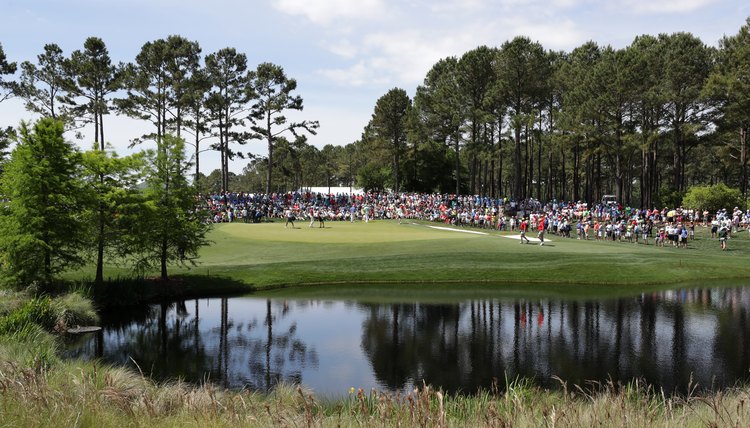Which Is Better: Bogey or Double Bogey?

When watching the game of golf, you will often hear people refer to a golfer as a “bogey golfer.” But what does that actually mean?
A bogey in golf represents the number of strokes it takes for a player to complete a given hole in their round of golf. Here are the golf hole scores that use the term “bogey” on the golf course:
- Bogey: Bogey is the term for a score that’s 1 over par on a single hole
- Double Bogey: Double Bogey is the term for a score that’s two over par on a single hole
- Triple bogey: Triple bogey is the term for a score that’s three over par on a single hole
- Quadruple bogey: Quadruple bogey is the term for a score that’s four over par on a single hole
A bogey is always a better score than a double bogey. There are, however, occasions when the effect of scoring a double bogey is no worse than that of shooting a bogey. In match play, for example, if one player scores a par, it doesn’t matter if his opponent shoots a bogey or a double bogey, as he loses the hole either way.

Derivation of Bogey
The golf term “bogey” first appeared in England in 1890 when Hugh Rotherham, secretary of the Coventry Golf Club, wanted to establish a standard number of strokes a good player should take on each hole. In the system that was developed, the score we now call a par was then termed a bogey.
The word came from an English dance hall song titled “The Bogey Man” which included the lyrics, "I’m the Bogey Man, catch me if you can." The idea was that the golfer was trying to catch the proper score, just as the song challenged listeners to catch the bogey man.
Par System
An English golf writer first used the term “par” to represent a perfect score in the 1860s, but the term didn’t catch on.
In 1911, the United States Golf Association developed a system standardizing scores, but it used par as the expected score, with bogey relegated to 1 over par. The British eventually implemented that definition into their rules of golf in the 1920s.

Establishing Par
The USGA originally determined that any particular hole up to 225 yards long would be a par-3 hole, meaning a score of 4 would be a bogey on the scorecard, while a 5 would be a double bogey.
Holes between 225 and 425 yards would be par-4 holes, holes of 426 to 600 yards would be par-5 holes, and any hole longer than 600 yards would be a par 6.
Each par designation assumes that a player will take two putts. So for a par-4 hole, for example, the assumption is that a good golfer, playing in ideal conditions, will have a tee shot, a shot from the fairway in which the golf ball would reach the green, and then take two putts to achieve a par with a putter.

Double Bogey
The term “double bogey” refers to a score of 2 over par on a single hole.
Some have tried to pin the label “buzzard” on the double bogey, but the term hasn’t caught on with the golfing public. In the United States, scores of 1 under par for a specific hole began to be referred to as birdies in the early 20th century.
Other golf scoring terms
Continuing the avian theme, 2 under par became an “eagle” and 3 under was labeled a “double eagle” or an “albatross.” A hole-in-one is when a golfer hits the ball into the hole off of their first shot. Hole-in-ones are rare for even the best golfers, like PGA Tour players and other professional golfers, but they do happen every once in a while, even for average golfers and recreational golfers.
Writer Bio
M.L. Rose has worked as a print and online journalist for more than 20 years. He has contributed to a variety of national and local publications, specializing in sports writing. Rose holds a B.A. in communications.
